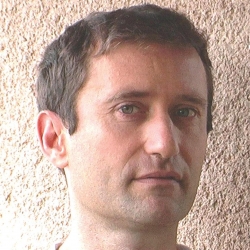COMMET
RO4 : Geometry and mechanics
Measuring and modelling the elastic, plastic or damage anisotropy of materials is of great importance for many applications, ranging from turbomachinery blades to ultra-deformed pearl wires to wave propagation in bones. The recent development of acoustic and elastic metamaterials and the desire to design paradoxical materials have given new impetus to the study of anisotropic elasticity and the geometry of constitutive tensors. The tools and concepts of group representation theory allow the efficient modelling of multiphysical anisotropic phenomena and material damage.
A first objective of the RO is to develop efficient algorithms for the computation of invariants and covariants of tensor representations, in order to explicitly describe their moduli space (stratum equations, reconstruction of tensors from low order covariants).
A second objective concerns theoretical mechanics, notably through the use of infinite-dimensional differential geometry (in particular the variety of Riemannian metrics). This formalism also appears in pattern recognition and image processing. This approach opens perspectives for a better formalisation of the mechanics/electromagnetism coupling, including in large transformations, involving in particular the general covariance.
Manager

COMMET team
Boris KOLEV
Research Director
Head of the Geometry and Mechanics research project
